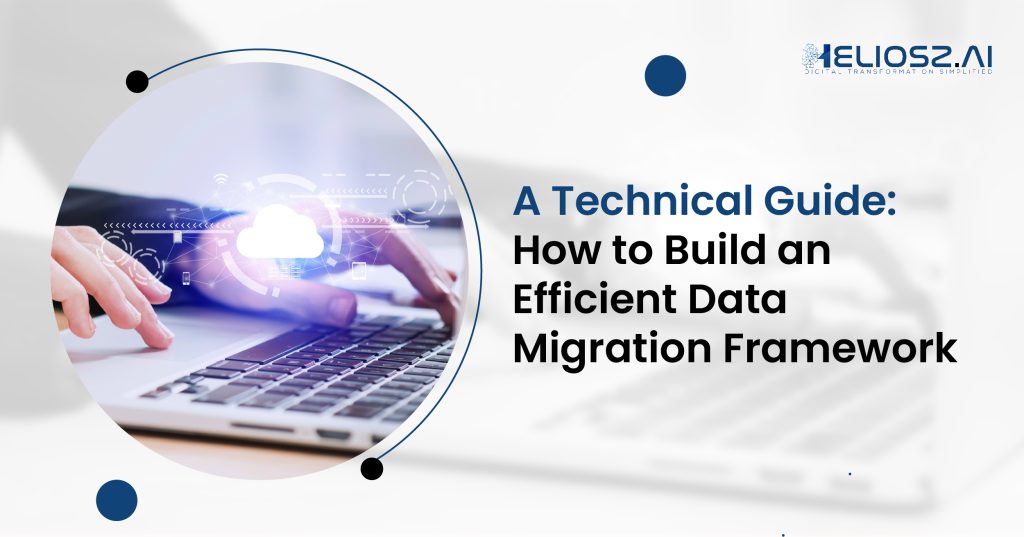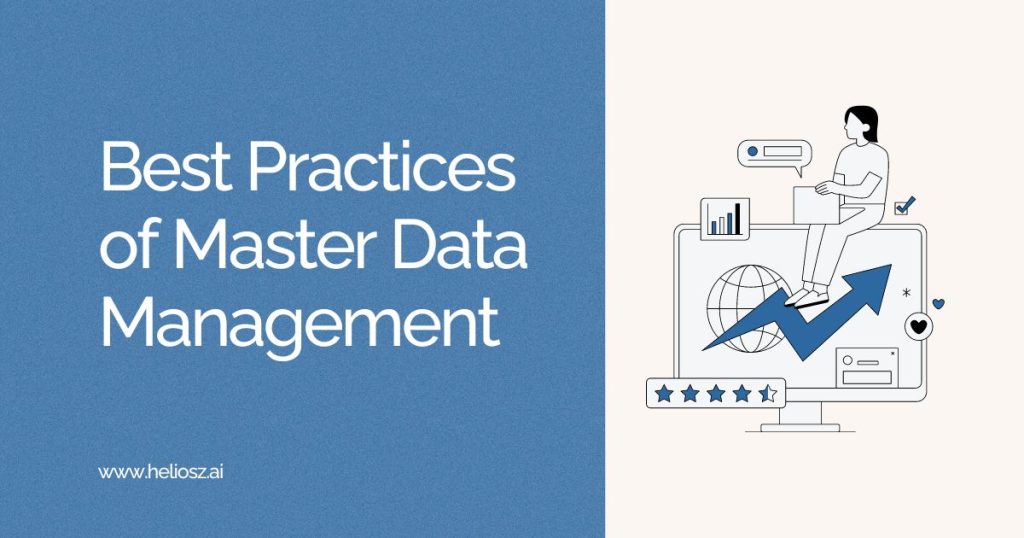
One of the most important aspects of modern IT operations these days is data migration, especially when constantly evolving businesses or systems are migrated to the cloud or consolidated sources. A sound framework will facilitate the safe and controlled execution of such migrations. Data migration refers to the transfer of data from one type of storage or format to another or from one computer system to another. It should be reliable, scalable, and repeatable.
This technical guide completely encompasses the entire process of understanding, designing, and building a robust data migration framework by defining critical components, best practices, and the step-by-step guide to creating a system that maximizes efficiency while minimizing errors and downtime.
Understanding Data Migration Frameworks
Data migration framework is a structured approach or methodology, which is intended to guide the complex process of migrating data from one environment to another. Typically, such frameworks are built as repeatable systems that adapt to different migration scenarios, like transferring data from an on-premises database to a cloud platform or vice versa.
Main objectives of the data migration frameworks:
- Consistency: Consistency means ensuring that the data is migrated without loss and duplication in environments.
- Integrity: This sets as its goal integrity, meaning the quality and correctness of data in the course of migration.
- Scalability: Scalability is about being adaptable to handle varying volumes of data without degenerating performance.
- Reusability: It is designed for reusability, meaning it can be used in several projects and reused with minimal modification.
- Automation: Automation limits the influence of humans regarding error-making and maximizes efficiency while processing.
A data migration framework is, by definition, an overall toolset that oversees and controls the whole life cycle of the migration process-from planning and testing to execution and validation.
Components of a Data Migration Framework
A good data migration framework comprises a lot of components and every component plays an important role in making the process of migration efficient and effortless. The main components are as follows:
1. Data Mapping and Transformation Engine
The data mapping and transformation engine includes definitions of how data in the source system is translated and transformed to fit the schema in the target system. It comprises of:
- Data Mapping: The process of determining relationships between source and target data elements.
- Data Transformation: The process of applying rules so that data types, structures, or values are changed to meet the requirements of the target system.
- Data Cleansing: Detecting and correcting errors in data prior to migration. These include duplicates; inconsistencies regarding values in fixed-size fields, such as date, phone, or zip codes; and missing values.
2. Data Extraction and Loading Module
This subcomponent deals with the extraction of data from the source followed by loading it into the target system. It comprises
- Data Extraction: Data are extracted from the sources. It could be databases, file systems, or even cloud storage platforms.
- Data Loading: This is the process of importing data to the destination environment. However, integrity and quality are retained.
- Batch Processing: This is where the data is processed in batches, to maintain performance levels and not be disrupted by migration.
3. Validation and Reconciliation Mechanism
Validation ensures the consistency, completeness, and accuracy of data migration as per the predefined business rules. Such a framework should enable tools including:
- Data Validation: To verify the completeness and correctness of the imported data.
- Data Reconciliation: to compare data before and after migration for integrity purposes, identify inconsistencies, and correct differences.
4. Automation and Scheduling Tools
Automation is required in terms of minimizing the effort of people and also limiting human mistakes. A good framework enables tools that:
- Scheduling: The migration jobs are scheduled to run during predefined periods or during off-peak hours.
- Workflow Management: Defining and managing sequences of operations, including data extraction, transformation, and loading processes.
5. Error Handling and Logging System
A good data migration framework should ensure there is an error-handling mechanism. This includes:
- Error Detection: The system will detect errors that include data mismatches, connection failures, or transformation errors.
- Logging: It tracks errors and events that occur while executing the migration process for auditing and troubleshooting.
- Recovery Mechanism. It uses retry and rollback mechanisms to handle failures and maintain consistency.
Step-by-Step Guidance on Building a Data Migration Framework
A data migration framework is built efficiently only when planned and structured. Here’s step-by-step guidance:
Step 1: Requirements Gathering and Planning
- Identify the source and target systems with their respective data models, structures, and constraints.
- Define business objectives for the migration: timelines, amount of data, and quality of such a migration.
- Check for compliance and regulatory requirements already in place that could impact the migration.
- Develop a migration plan with clear milestones, deliverables, and contingency strategies
Step 2: Framework Architecture
- Design flexible architecture modular at its core to accept varieties of data and migration scenarios.
- Define data mapping, transformation rules, and validation criteria
- Integrate tools for automation for easier processes, among them scheduling software and workflow management
Step 3: Developing the Framework Components
- Creating or configuring extraction and loading modules in support of source and target environments.
- Develop the transformation engine and validation mechanisms so that they respect the architecture of the framework.
- Implement a logging system that captures detailed logs to monitor and handle errors.
Step 4: Testing and Validation
- Unit tests individual components in the framework, like the extraction module and the transformation engine.
- Test how different components of the framework work coherently with each other.
- Tests should be concluded on test environments with sample data.
- Pilot migration to exercise the framework in a real-world environment before general large-scale deployment
Step 5: Deployment and Execution
- Deploy the framework in a controlled environment and versioned and access controlled environment
- Monitor the migrations with automated monitoring tools and logs
- Have a rollback or retry mechanism ready for critical errors at migration
Step 6: Post-Migration Validation and Optimization
- A good validation of the migrated data should be done for completion and accuracy.
- Pre- and post-migration data can be compared to find discrepancies and reconcile them.
- Then, the framework is optimized with the knowledge of bottlenecks or known performance issues that had to be addressed during migration.
Best Practices in Developing a Data Migration Framework
Best practices ensure that an efficient and reliable data migration framework is developed. The most critical best practices are summarized as follows:
- Prepare for a Pilot Migration: A small-scale pilot migration can be run to identify potential issues and calibrate the framework before full-scale deployment.
- Automate Where Feasible: Higher precision using fewer manual errors accompanied by productivity is achieved with the help of automation during data validation and reconciliation, among other routine processes.
- Secure Data: Highly sensitive data is to be encrypted. Most communications made with data outside the organization must also be encrypted so that no one unauthorized gets to have a view of the data at any point during the migration process.
- Define Data Governance Policies: Ideally, clear definitions of roles and responsibilities relating to data handling must be clarified to ensure all activities are conducted in strict adherence to all organizational and regulatory practices.
- Use Version Control and Documentation: Track the changes done to the framework and keep detailed documentation for troubleshooting, audits, and future migrations.
- Track Performance Metrics: Use monitoring tools to track key performance metrics like data throughput, error rates, and processing times to make necessary optimizations in the migration process.
How Heliosz Facilitates Building a Robust Data Migration Framework
Heliosz as data migration solutions leaders build scalable and secure data migration frameworks. It approaches automation, integration, and adaptability to enable smooth completion of data migration projects with minimal disturbance.
Heliosz’s Data Migration Solution Main Features
- Connector Pre-Built: It offers various pre-built connectors for popular databases, cloud platforms, and enterprise software to help simplify the extraction and loading of data.
- Automated Workflows: The system provides the facility of automated data migration workflows concerning scheduling, transformation along validation.
- Scalability: Heliosz solutions are geared towards small-scale migrations and large enterprise-level data transfer needs.
- Compliance and Security: Heliosz solution framework employs strong encryption and adheres to major industry standards to keep the data secure and complaint along the full lifecycle of the migration process.
- Heliosz would be able to monitor the activities of migration in real-time and provide comprehensive reports on how the migration is going, performing, and experiencing challenges.
In collaboration with Heliosz, it would unlock such capabilities to help organizations design an efficient and scalable data migration framework that fits their needs.
Final Thoughts
Building a robust data migration framework is an important task that demands proper planning, solid architecture, and best practices. With that in mind, combined with a structured approach, businesses can be sure that their data migration processes will work the first time and become repeatable and scalable when used in future projects.
Heliosz can be one of the tools in making the realizing framework of data migration in an even more efficient and reliable way so that the organizations can focus their capabilities more on the strategic goals rather than the operational problems. Time and resources put now into fully embedding a robust data migration framework are likely to yield great long-run effects, such as better data quality, lower operation-related risks, and better general system performance.


